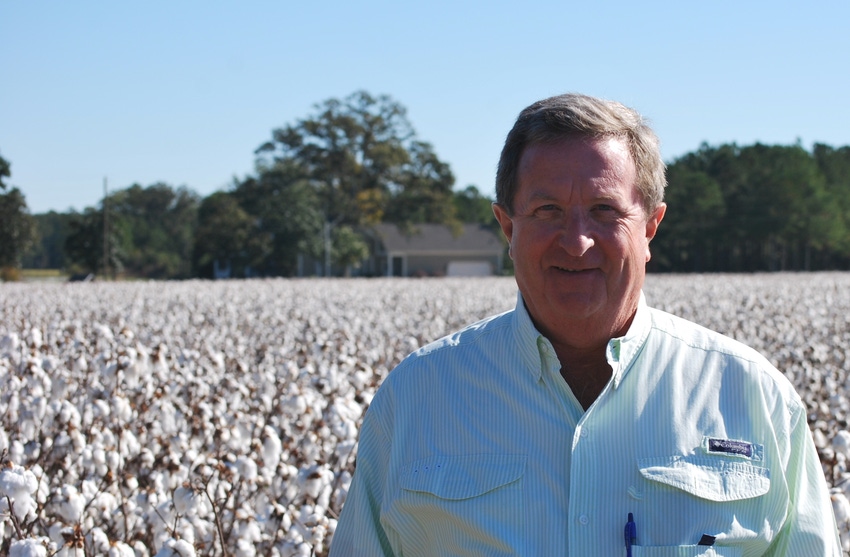
Ronnie Lee likes U.S. cotton’s global reputation but he’s getting worried about it.
Sitting in his office at McCleskey Cotton Gin in Bronwood, Ga., Lee maneuvered between meetings and phone calls, but the current chairman of the National Cotton Council paused to talk frankly about a concerning blemish on U.S. cotton’s good name: contamination.
“Over the years, U.S. cotton has had an excellent reputation with global cotton customers as a source of contamination-free cotton. Unfortunately, based on an increase in complaints that we are receiving from mills, our reputation and our ability to receive a premium in the market is under serious threat,” Lee said.
The complaints about contamination in the past few years, some formally submitted by foreign-buyers, have gotten U.S. cotton leadership's attention because they are coming from loyal customers, he said. Contamination at the mills cost time and money to correct.
Lee has investigated the issue of contamination on his family-run farm, custom cotton harvesting operation and gin. He said the process of contamination elimination starts in the cotton field, and anyone who’s ever walked a cotton field knows it can trap about anything that blows in, such as plastic grocery bags or packaging. It’s worth dedicating manpower and time to clean fields up before the pickers move in.
But it doesn’t stop there, the person running the picker must remain mindful and, yes, even stop the picker to get out and remove trash from a field, he said, and he understands stopping a busy harvest for any reason can be a hassle, but looking at the big picture, it is, again, worth it.
Since coming to market almost a decade ago, the John Deere self-propelled round-bale cotton picker has improved harvest for many farms throughout the cotton belt with faster, more-efficient picking and greater protection for the cotton in the field, during transport and in pre-ginning storage.
The round-bale harvesting system has become very popular, even with its hefty price tag, and it has been improved upon in the last few years. John Deere recommends protocols on how to use it and handle the bales properly to avoid problems. But still, the technology comes with what can be a double-edge by way of the plastic used to wrap the round bales. Damaged plastic wraps, whether damaged in the field or at the gin, are a potential contamination source if not handled correctly.
With this in mind, Lee this year initiated on-site training sessions for his grower customers, their picker drivers and Lee’s gin employees on the best methods to harvest, handle and gin cotton to eliminate potential contamination. The initial session included videotaping the presentations of invited speakers from John Deere and the National Cotton Council. The video is in post-production now, and includes discussion and comments from high levels of John Deere’s product management team. He plans to make the video available on his company’s website for further reference and to use it in part as a wider educational piece distributed by the NCC.
Elimination of contamination is a process U.S. cotton will need to hone. The NCC and its partner associations have rallied the call for contamination-free U.S. cotton for several years now, and the NCC maintains a special task force charged with focusing industry-wide comprehensive approaches into researching contamination sources and recommending measures targeted at producers, ginners and warehousers to ensure U.S. cotton quality remains high and contaminate free.
The message is getting across, but nothing is guaranteed without effort. Lee said each person in his operation has responsibility for avoiding contaminating cotton. The same is true all along the U.S. cotton-handling-and-delivery chain, from the fields to the warehouses and every place in between.
“The elimination of contaminates in U.S. cotton is a top priority,” he said.
The NCC has a website dedicated to getting the word out on best practices with regard to handling cotton to prevent contamination.
About the Author(s)
You May Also Like






